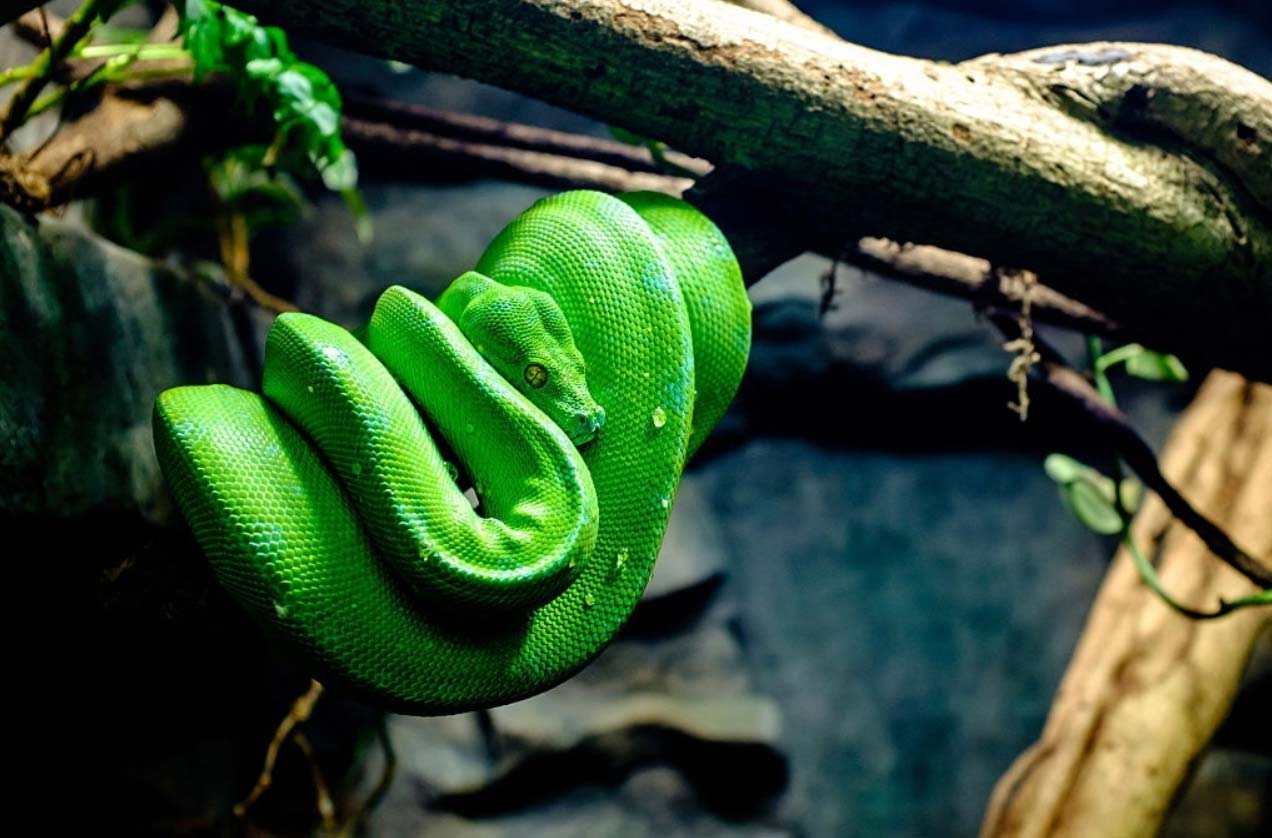

Install at least two thermostats on each side to monitor both temperatures simultaneously. One warmer area that’s always above 85☏ (29☌), preferably near the basking spot, and one cooler side where you keep things between 70☏-85☏ (21-29 ☌). An important thing to consider is that it has two separate areas. You can buy appropriate heat sources like incandescent heat bulbs or heaters designed especially for reptiles to help maintain the right temperature range inside the terrarium. Green tree pythons require temperatures between 83☏ (28☌) during the day and 78☏ (26☌) at night, humidity levels between 75% to 90%, good air circulation and plenty of light coming from above. The substrate should be kept dry and spot cleaned regularly with warm water.Īdd a large water bowl to allow your pet to soak if needed, and keep it filled with clean, fresh water daily. Use artificial plants to make it look like a rainforest and provide shelter. Provide a vertical enclosure with climbing spots that use branches or cork bark made for reptiles. Size is important because adult specimens may reach up to four feet long, so a minimum size of two feet by three feet is recommended for an adult snake. Provide Appropriate HousingĪ green tree python’s enclosure should mimic its wild environment as much as possible. Caring for a green tree python requires patience, dedication and appropriate knowledge of its environmental needs. Despite their great beauty, they may not be suitable pets for beginners.

This fascinating species can be found mainly in Indonesia, Papua New Guinea and some parts of Australia.

Green tree pythons are one of the most attractive snakes in the world. These snakes are also known for their defensive behavior, including hissing, striking, and biting if they feel threatened. During the day, they will often coil up in a ball or hide among the foliage to avoid detection. They are nocturnal and spend most of their time in trees, using their prehensile tails to anchor themselves while sleeping. Green tree pythons are generally solitary animals, though they may form small groups during breeding. At night they may also search for insects or amphibians under leaves or rocks near water sources. Usually, they ambush their prey by waiting patiently by an overhanging branch, then suddenly striking when the prey comes into range. Green tree pythons feed on various small vertebrates, including frogs, lizards, bats, birds, mouse-like rodents, echidnas, and other snakes. When they climb through trees, they use crevices between branches or loose bark to find protection against predators such as lizards, hawks, or cats.

They live in lowland and upland forest habitats, mangrove swamps, and savanna woodlands. Green tree pythons inhabit dense tropical rainforests where they typically stay close to streams or other water sources. They typically have blue or green scales, but colour variations exist, with some individuals having yellow coloring. These snakes are arboreal animals, meaning they spend most of their time in trees. The Green Tree Python measures an average of 6 feet long when fully grown and can weigh up to 2 pounds (1 kg). It’s known for having brilliantly colored scales that range from blue-green to yellow-green depending on location. The Green Tree Python (Morelia viridis) is a beautiful and fascinating snake native to the tropical forests of New Guinea, Indonesia, and Australia. This article will provide an overview of Green tree python care and handling, including their natural history, enclosure setup requirements and dietary needs. However, these reptiles still require specialized care and attentive husbandry to be kept healthy. Green tree pythons have become increasingly popular in the pet trade due to their unique appearance and manageable size. This iconic species is renowned for its vibrant colors, ranging from dull blues and greens to bright yellows and oranges. Green tree pythons (Morelia Viridis) are small- to medium-sized arboreal python species endemic to New Guinea and nearby islands.


 0 kommentar(er)
0 kommentar(er)
